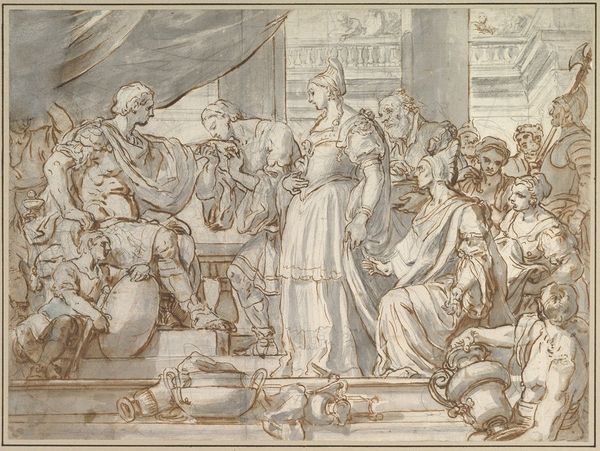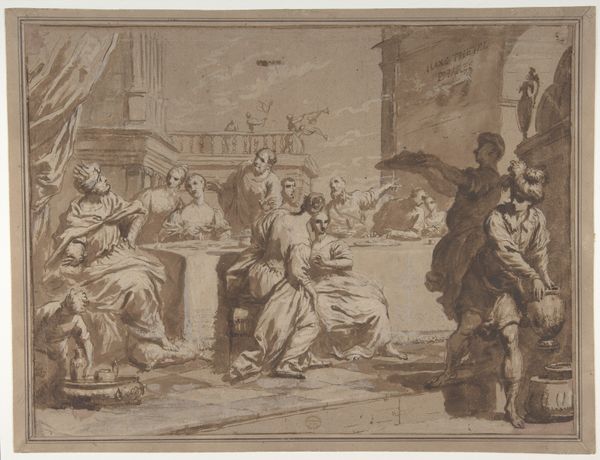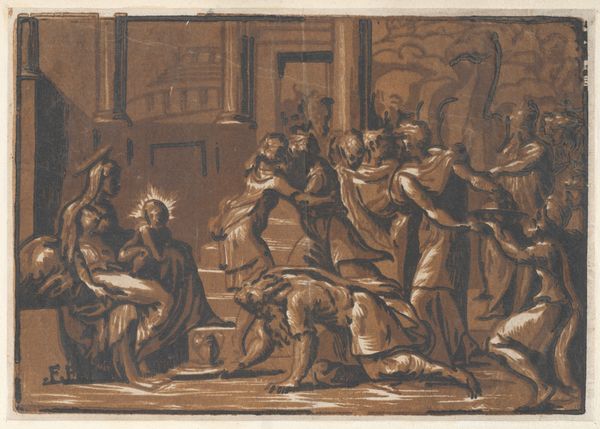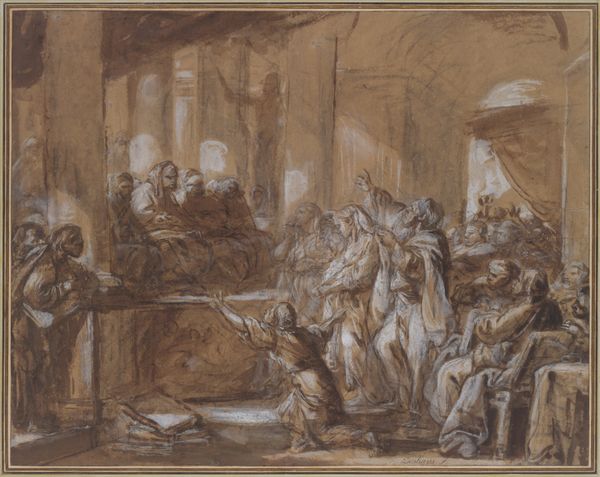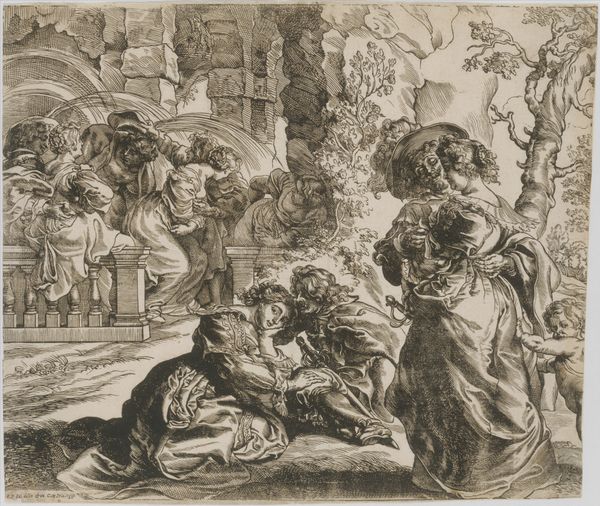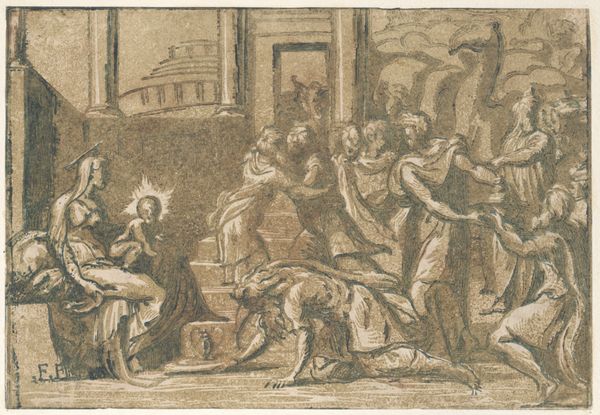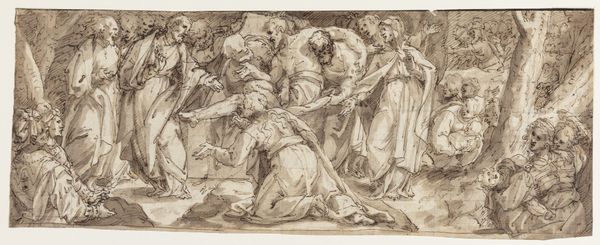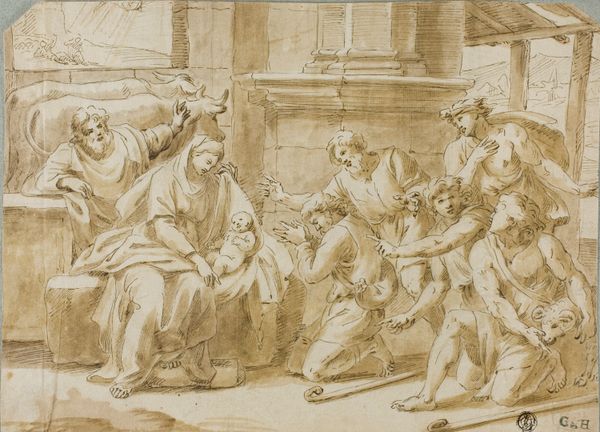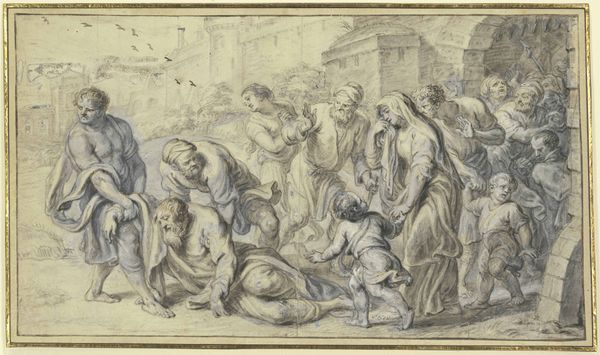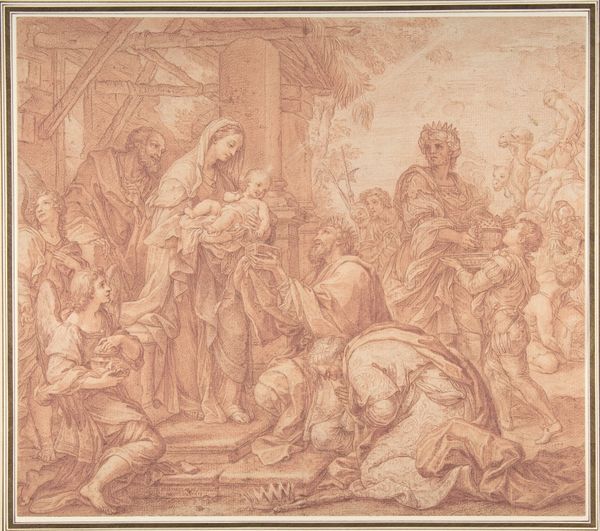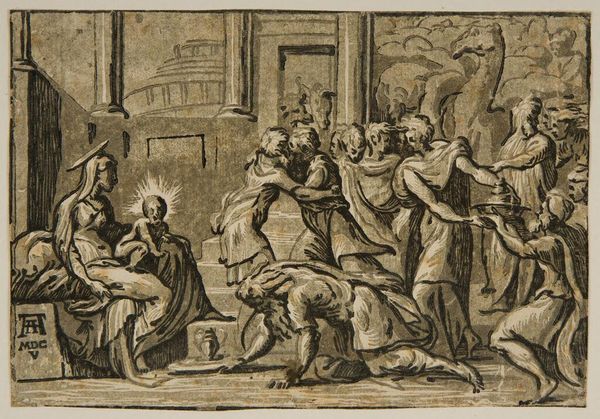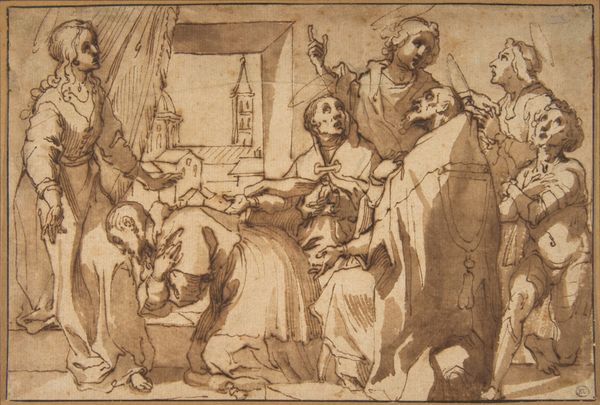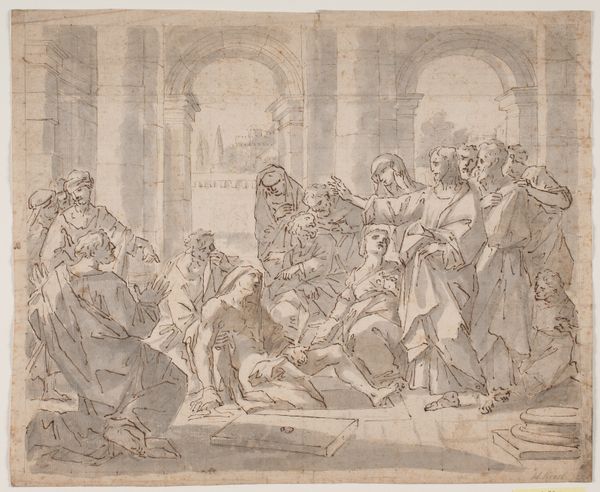
drawing, paper, ink, charcoal
#
portrait
#
drawing
#
figuration
#
paper
#
charcoal art
#
oil painting
#
ink
#
group-portraits
#
genre-painting
#
charcoal
#
history-painting
#
academic-art
#
watercolor
Copyright: Public Domain: Artvee
Curator: Before us, we have a drawing titled "Domestic Scene," attributed to Jean-Baptiste Greuze. It seems to be executed in ink and charcoal on paper. Editor: My initial reaction is one of slightly unsettling chaos. So many figures crammed together, an almost theatrical quality, but also a pervading sense of sadness. Curator: The composition certainly draws the eye, doesn't it? The grouping of figures is highly stylized, typical of academic art and history painting. Notice the poses; they are dramatic, almost as if on a stage. Perhaps the work suggests not a "domestic scene" so much as the *idea* of a moral tale. Editor: Exactly! There is definitely an idealization happening. The lighting is crucial. Soft washes create depth, and the selective highlighting directs our attention to key figures—like that central seated family. This reinforces the emotional tenor of this family grouping but simultaneously distances them through its staging. What of the less centered, more sketch-like figures that compose the whole? Curator: You've noticed an essential symbolic dichotomy. The seated family represents core virtues like stability and piety. Those clustered on the side are dynamic but ephemeral. Consider how those extended hands may point to need and also greed; this piece isn’t so straightforward and simple. Editor: So, Greuze may be pointing towards how society at that moment really defines these values... Curator: Yes, absolutely. Greuze often used his art to portray scenes with overt moral implications for a rising merchant class. In my perspective, Greuze isn’t simply showing you his understanding of a nuclear family, rather its cultural role within society itself. These symbols, almost theatrically staged, reflect then societal values, ambitions, and maybe a dash of cautionary tale. Editor: I hadn't thought of the cautionary element so directly, yet it’s palpable. Despite my initial perception of sadness, I now recognize a far richer complexity woven within the seeming ‘genre painting’ Curator: Indeed. It reveals the careful orchestration of symbols for conveying deeper messages on paper. Editor: It also gives us some new insight on how powerful artists are as interpreters, defining and reflecting collective conscience during the epoch that they have been evolving in.
Comments
No comments
Be the first to comment and join the conversation on the ultimate creative platform.
